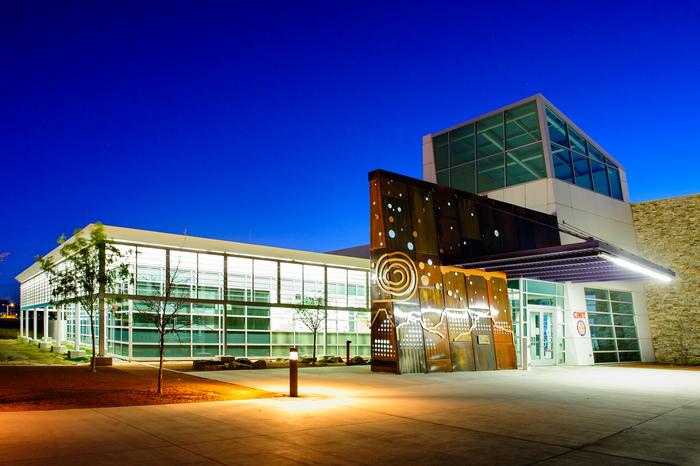
Sandia National Laboratories is intensifying its efforts to tackle a looming energy crisis exacerbated by the burgeoning demands of artificial intelligence (AI) technologies. The challenges posed by an anticipated surge in microelectronics energy consumption necessitate collaborative and innovative solutions. Experts predict that within the next decade, computing could consume a substantial fraction of the earth’s total energy output. With AI’s rapid adoption across various sectors, particularly in modern home and workplace environments, the urgency for energy-efficient computing solutions has never been more pronounced.
The U.S. Department of Energy (DOE) is responding to this critical challenge by establishing three new Microelectronics Science Research Centers, designed to explore the intricate relationship between energy efficiency and cutting-edge computing technologies. One of these centers, aptly named the Microelectronics Energy Efficiency Research Center for Advanced Technologies, or MEERCAT, will serve as a focal point for research initiatives that blend various modern computational techniques, including edge processing, sensing, artificial intelligence, and high-performance computing. As a founding member of MEERCAT, Sandia will spearhead one of the eight pivotal research projects, concentrating on finding novel strategies to enhance energy efficiency within the microelectronics sector.
In addition to MEERCAT, the other two centers will address resilience in extreme operational environments, such as those experiencing high radiation, cryogenics, and intense magnetic fields. By leveraging Sandia’s extensive research capabilities, these centers aim to deliver superior performance options for energy-efficient computing. According to Jeffrey Nelson, a key figure at Sandia, these initiatives are designed to reinforce partnerships with industry stakeholders and drive rapid innovation to meet emerging energy demands.
The growth of AI undeniably contributes to this escalating energy demand, as AI systems are inherently more energy-intensive than traditional computer algorithms. As societal reliance on such advanced technologies continues to rise, including innovations in quantum computing and sophisticated sensor technologies, it becomes imperative to pioneer energy-efficient methodologies. With a generous investment of $179 million from the new research centers, 16 interdisciplinary projects will be underway over a maximum four-year timeline, all funded through DOE’s Office of Science in accordance with the CHIPS and Science Act legislated in 2022.
Nelson emphasizes the importance of collaboration in this endeavor, stating that Sandia is actively engaging with a multitude of corporations to identify their unique challenges. This collaborative approach aims to harness the collective expertise and resources across various DOE branches to deliver swift, effective solutions. This focus on integrated efforts not only cultivates innovation but also fortifies local economies and national security interests.
The announcement of the Microelectronics Science Research Centers follows extensive discussions between leaders of the DOE’s scientific user facilities. Over the past two years, these groups have convened regularly to share their resources and strategize on how to address national priorities. Nelson himself leads the Center for Integrated Nanotechnologies, which operates in partnership with Los Alamos National Laboratory. The combined efforts of all five user facilities aim to streamline advancements in novel materials that could significantly enhance computing efficiency.
Researchers have identified several alternative materials—such as molybdenum disulfide, gallium arsenide, and diamond—that exhibit promising characteristics for energy-efficient computing compared to traditional silicon. Although these materials could potentially revolutionize the microelectronics industry, the challenges associated with refining them, scaling production, and establishing manufacturing channels while competing with an entrenched silicon supply chain are formidable.
In pursuit of viable solutions, a collaborative project titled “Nano-Scale Research Center for Heterogeneous Integration Platforms” has been proposed. This initiative intends to capitalize on the existing capabilities and expertise available across the DOE user facilities and partners, focusing on integrating new materials into established silicon fabrication methods. The goal is to ensure seamless interactions among different materials, optimizing the flow of electrons and data for enhanced chip performance.
Recent funding from the DOE has now enabled this ambitious project to proceed, uniting experts from all five Nanoscale Science Research Centers along with notable contributors from Fermi National Accelerator Laboratory, the Massachusetts Institute of Technology (MIT), and MIT Lincoln Laboratory. The multifaceted approach of heterogeneous integration will strive to unify disparate materials into a cohesive silicon foundation, navigating the complexities of electron interaction across varied substrates.
By fostering cross-laboratory cooperation and comprehensive research, Sandia and its collaborators hope to stimulate innovations that will lead to the production of considerably more energy-efficient computer chips. According to Nelson, the overarching aim is to accelerate the pace of technological discovery while positively impacting both economic growth and national security.
Addressing the complexities of energy-efficient technology development is not merely a scientific venture; it represents a critical aspect of the U.S. commitment to maintaining leadership in technological advancements while ensuring a sustainable future. As sectors increasingly rely on AI and high-performance computing, the national strategy around microelectronics is poised to play a fundamental role in meeting the energy challenges of modern society.
This concerted effort by Sandia National Laboratories and its partners highlights an essential understanding: the future of computing relies not solely on innovation but also on strategic collaboration. With the specter of an energy crisis looming, the microelectronics sector is uniquely positioned to spearhead transformative solutions that not only address current inefficiencies but also lay a robust foundation for sustainable advancements in technology for generations to come.
The path ahead will inevitably involve overcoming numerous engineering and scientific hurdles, but with teams of dedicated researchers, engineers, and industry leaders focused on collaboration and innovation, a new era of energy-efficient computing may be just on the horizon.
Subject of Research: Enhancing Energy Efficiency in Microelectronics
Article Title: Sandia National Laboratories Launches Initiative to Tackle Energy Crisis Through Advanced Microelectronics Research
News Publication Date: October 2023
Web References: N/A
References: N/A
Image Credits: Randy Montoya, Sandia National Laboratories
Keywords
Microelectronics, Artificial Intelligence, Energy Efficiency





